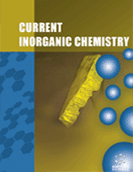Abstract
Background: The chemistry of nickel(II) clusters continues to attract the intense interest of many inorganic groups around the world for a variety of reasons, including its relevance to Molecular Magnetism.
Objective: The primary objective of this study was to employ the polydentate Schiff base Nsalicylidene- 4-chloro-o-aminophenol in nickel(II) carboxylate chemistry for the synthesis of coordination clusters.
Methods: The influence of a variety of synthetic parameters on product identity was investigated. The solid-state structures of the complexes were determined by single-crystal X-ray crystallography. The nickel(II) clusters were characterized by microanalyses and infrared spectra. Variable-temperature magnetic susceptibility studies were performed on two selected nickel(II) clusters.
Results: Tetranuclear, hexanuclear and decanuclear nickel(II) clusters were synthesized. In the tetranuclear complexes, the four metal ions are located at four vertices of a planar defective dicubane. The core of the hexanuclear cluster consists of four fused defective cubanes. The metal topology of the decanuclear cluster comprises ten edge-sharing nickel(II) triangles. One of the tetranuclear clusters has a diamagnetic spin ground state. The acetate-containing tetranuclear cluster is characterized by ferromagnetic nickel(II)···nickel(II) exchange interactions and possesses a total spin of 4 in the ground state.
Conclusion: The prepared complexes have interesting molecular structures and magnetic properties. A comparison of the nickel(II) cluster chemistry with N-salicylidene-4-chloro-o-aminophenol with that of related tridentate Schiff bases reveals similarities and differences.
Keywords: Carboxylate co-ligands, coordination chemistry, crystal structures, infrared spectra, magnetic properties, nickel(II) coordination clusters, N-salicylidene-4-chloro-o-aminophenol, Schiff bases.
Graphical Abstract
 23
23 2
2 2
2 1
1

